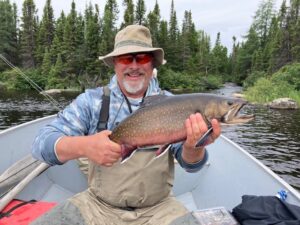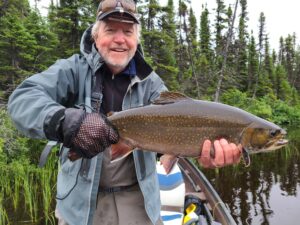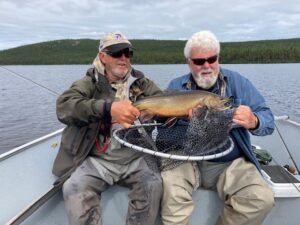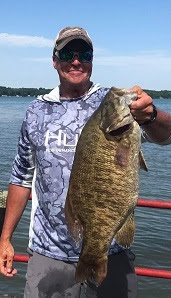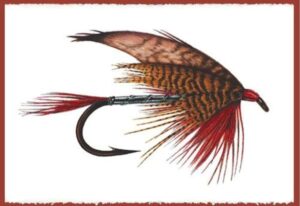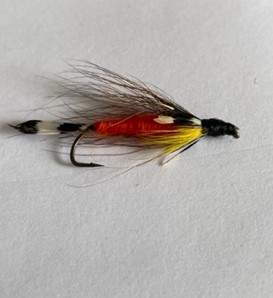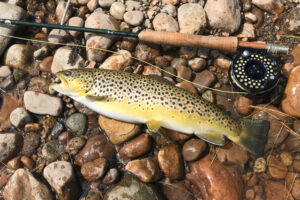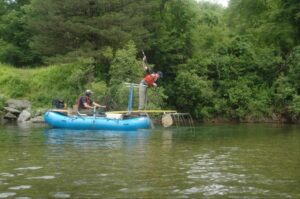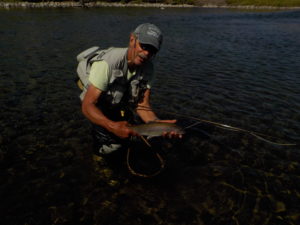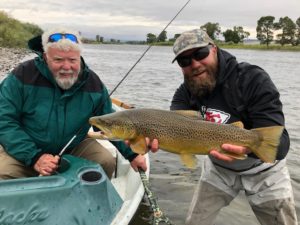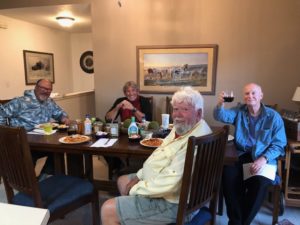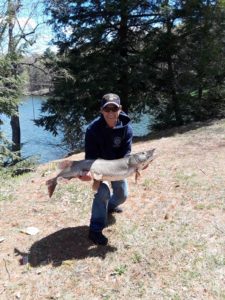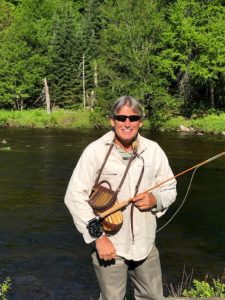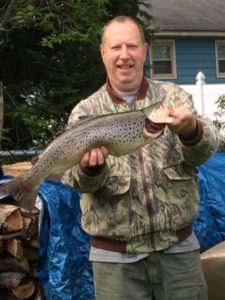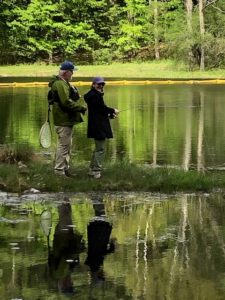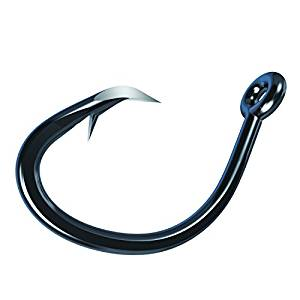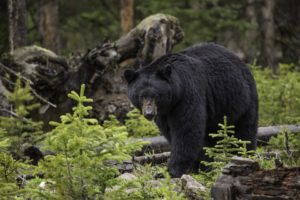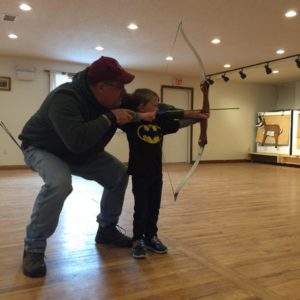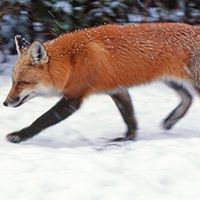A couple of years ago 3 local fly fishermen and their friend Bill Waite (from Westminster, MA) started planning a trip up to Labrador. The local anglers were Attorney Michael Shepard and Craig Smith from Dalton and me. We planned to float plane into a remote area up there known for having some of the largest brook trout in the world. Bill, Mike and I had fished there before out of the Minipi River Lodge. Readers may recall that trip chronicled in this column in September 2016. This year we were going to fish out of the Igloo Lake Lodge. This would be Craig’s first trip up there.
Well, Covid came along and for the next two years curtailed our plans.
This year, things opened up and we were good to go. Airline tickets were purchased, proper equipment was purchased and practiced on, booze orders were arranged to be sent in, and in my case, I was walking 2 miles a day to get into shape. It was to be a 10-day trip with 6 fishing days.
All systems go. Mike and Craig would fish together and me and Bill would be the other team. Each pair had a guide.
About a month before our departure, a surprise health issue arose with me, with treatment precluding me from going on that fishing trip. Talk about a kick in the pants. C’est la vie! (Such is life). On departure day, I saw the guys off with a heavy heart.
They drove to Montreal, took a flight from there to Goose Bay, Labrador and then float planed in a Borealis Airlines twin engine Otter into Igloo Camp, an island on the Igloo River, which is on the headwaters of the Eagle River system.72 miles South East of Goose Bay near the 53rd parallel. On the way in, they “really enjoyed” all the stories about the 2 float planes that crashed in the past, one of the bodies was never found. Igloo Camp outfitters lease 2 acres of land from the government which gives them access to the various areas.
As soon as they arrived, they began catching huge brook trout. I repeat HUGE. Some days they would wade flyfish the river, while other days they fished Burton Pond out of canoes. (They lost one day due to bad weather at the camp).
That brook trout fishery is unique in the world, with trout exceeding 9 lbs. And the outfitters intend to keep it that way – flyfishing only, single, barbless hooks, catch and release only.
Of course, Craig Smith out-fished the others, cleaning their clocks nearly every day usually with the most and largest fish. Going by the guides estimates for weights he caught over 16 trout between 5 and 9 lbs, another 15 -20 in the 2-5 lbs. range and endless amounts of smaller fish. He caught one 4 lbs trout with talon marks (from an eagle?) on its back. He mostly fished the river but the majority of the real big fish came from Burtons Pond. But he did catch three 7-8 lbs. fish in the river.
Look at that beauty that he caught out of a canoe.
He may not have caught the largest trout on this trip, though, for Bill landed a trout that his guide estimated to be around 9 lbs. He said that it was the largest brook trout that he had seen this season and he had previously measured fish in the eight-pound range. He said that this fish was bigger, between 8 and 9 lbs. Look at that fish! Just think, it could have been mine!
Bill caught it out of a back stream at the base of Mealy Mountain using an 8-wt flyrod with 3x leader. It is a little inlet to a stream with a water depth of only about 3 feet. He caught it on a size 12 Stimulator fly. The fight began as a very gentle sip, but then it got wild. “The fish put up “a hell of a fight” and he thought they were going to capsize the boat at one point. “In that small area, the big fish was running all over the place”. They don’t jump at all, except on the original take. It was a wild fight and he was very excited to catch that fish. He never caught such a big fish on a dry fly before. He also caught quite a few other nice sized fish.
So how did Mike do? Well, it was a tough trip for dry fly guys and Mike is a dry fly fisherman. To his joy, he saw lots of size 6 or 8 large hex (hexagenia limbata) mayflies all over the water, but the fish weren’t feeding on them. The traditional topwater bite was almost non-existent. But he quickly figured it out, changed dry flies and began catching them in great numbers on a large green drake fly (Ephemera guttulate.) As the picture clearly illustrates, he caught some bruisers, too. That one in the picture topped 6 lbs.
The guys also caught quite a few pike some around the 40” mark.
All of the weights were estimates as the guides at Igloo do not usually carry scales with them. They allow you to hold the fish for a picture and then immediately release them.
Craig used a variety of flies including big ugly 4”- 6” long streamers, leech imitations and nymphs. Black and white were the best colors. A rod size 9’, 6wt was his go-to rod, but he used his 10’, 7-wt on the lakes.
Mike and Craig said wading was treacherous as the boulders seemed to be that size that are perfect for losing your footing, and they were extremely slick. “The trek into Burton Pond was the worse 2 miles of walking you can imagine. Imagine walking for 2 miles on top of a waterbed covered with a saturated 12” sponge. Throw in mud, roots, holes, and stumps and endless waves of mosquitos, blackflies and no-see-ums in your eyes, nose, and throat. An occasional cigar helped clear the air.” said Craig.
The longest walk to the river was also about 2 miles to “Archies Hole” and Mike and Craig made this hike twice during the trip where they encountered endless roots, stumps, mud, and logs, always wet and slick as glass and thick black spruce on both sides of the trail. Though they never saw any bears they were graced daily with big piles of bear poop at multiple locations along this trail.” I’m sure they were watching.” Craig said.
Craig lost both of his felt soles to the mud bog but fortunately found them coming out and he was able to screw them back onto his waders for the rest of the trip. “If I had a dollar for every time Mike and I ended up on our asses walking into fishing spots,” he said, “ I could probably pay for another trip up there.”
But he would do it in a heartbeat because the fishing was phenomenal.
They claimed the lodge itself was beautiful. All the rooms were modernized single rooms and they had three very good meals a day.
If you go there, you will need very good raingear and layers of warm clothes. Be prepared for anything.
Cost of trip? Fortunately, they had discounted vouchers. Otherwise, one might have to pay around $7,000 which includes tips for the outstanding guides.
Sounds like they had a fantastic trip. Wish I was there.
Massachusetts Gun Law Seminar
The Stockbridge Sportsmen’s Club, located at 24 West Stockbridge Road, Stockbridge, is hosting a Massachusetts Gun Law Seminar entitled Separating Fact & Fiction on Wednesday, August 31 at 6:00 pm sharp.
The 3.5+ hour long seminar explains State and Federal laws and regulations, in layperson terms, pertaining to definitions, purchase, possession, transport, record keeping requirements, buying/selling, interstate transport, interstate purchase, ammunition storage and best practices for gun owners.
Seminar lecturer Jon Green has been the Director of Education and Training for Gun Owner’s Action League since 1999. He served on the NSSF Range Advisory Committee for 4 years and has owned and managed FFL 01 businesses. He has conducted similar classes for thousands of citizens, hundreds of MA State Police BFS Certified Instructors, MA Hunter Education Instructors and MA EPO’s.
Fee: Contributions appreciated. To Register: robmcdermott@verizon.net 413-232-7700.

